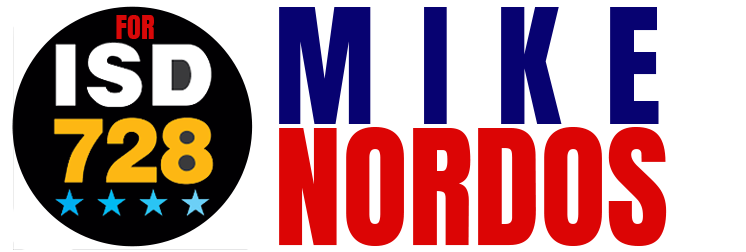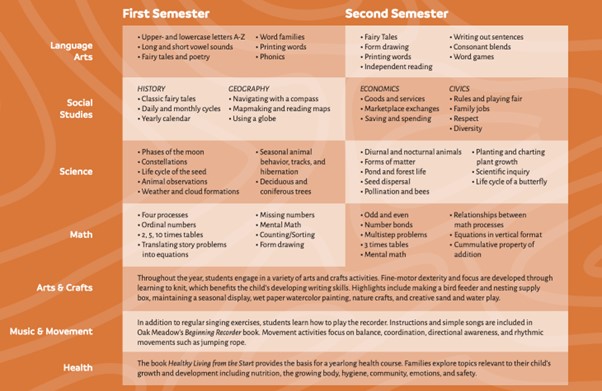My Vision For Ensuring Future Success
I bring a wealth of expertise in developing and implementing strategic improvement plans. I will prioritize meaningful metrics that ensure we meet our goals. My commitment extends beyond addressing educational challenges to ensuring alignment between the board’s values and those of our community. The current board has fallen short of reflecting our community values, and I believe there needs to be a new perspective. I recognize the importance of a harmonious relationship, where the board reflects the diverse perspectives and values of the community it serves. A transparent board that actively engages with parents and teachers is paramount for success. By fostering open communication and engaging in collaborative decision-making with front-line educators to develop creative solutions that serve our students, staff and the community’s interests, I aim to bridge the current gap and create a board that truly represents the ideals and aspirations of our community. Further, I believe a collaborative approach will also produce measurable and consistent academic outcomes and improve safety for both staff and students. I am committed to spearheading initiatives that tackle these challenges head-on, fostering an environment conducive to optimal learning and growth for our students and safety for all.

My Campaign Promises
TRANSPARENCY AND REAL COMMUNITY REPRESENTATION
- Prioritize meaningful community input.
- Implement new operational board policies to ensure real community representation.
- Accessibility to detailed curriculum.
- Reinstate inclusion of recorded community speaking segments at board meetings.
ENSURING FUTURE SUCCESS
- SMART Goals: Measurable goals for academic achievement adjusted as determined by outcomes.
- Return to proven academic basics without political influences.
- Improve financial metrics through efficient allocation of funds.
- Advocate for a collaborative culture with educators to improve outcomes and work environment.
SAFETY FOR ALL
- Fair, consistent and equal application of discipline policies.
- Improve educator safety.
- Implement student safety education program.

TRANSPARENCY
Prioritize Meaningful Community Input
Initiate greater community involvement with an open agenda segment for true community input regarding 5-year strategic plans. Not only does MN Statue require this, but many parents and community members involved in the recent 5-year strategic planning committee and community cafes noted fully pre-planned agendas were followed without open discussion driven from the community’s point of view. These processes were fully driven by district administration and people did not feel they had real input into the process or the final outcomes. The school district should reflect the community values it works for. Inviting and implementing real community input through tweaking current processes will ensure the district more closely aligns with their community and aligns with MN law that requires districts to include significant community input into the schools that serve them.
Further, ensure every school reimplements a parental committee advisory board district-wide by creating a district policy making this a requirement. Additionally, the policy should include wording to avoid appointing majority district employees to parental committee advisory boards, their spouses and/or family members to avoid conflict of interest and allow the broader community real input into their school system.
Implement New Operational Board Policies to Ensure Real Community Representation
Minnesota School Board Association recommends school board members be involved in committees and advisory boards that include curriculum, safety and finance and work directly with administration to represent the values, ideals, and voice of the community the district serves. Further, surrounding boards operate in this fashion, yet the ISD 728 school board has abdicated its representative power to their administration, thus rendering their direct representation in these areas null and void. Further, involving board members directly on a variety of key advisory committees is congruent with Minnesota law S123B.09 which governs school board member duties as below:
- Subd. 7. Policy making.
The board shall make, and when deemed advisable, change or repeal rules relating to the organization and management of the board and the duties of its officers. - Subd. 8. Duties.
The board must superintend and manage the schools of the district; adopt rules for their organization, government, and instruction; keep registers; and prescribe textbooks and courses of study. The board may enter into an agreement with a postsecondary institution for secondary or postsecondary nonsectarian courses to be taught at a secondary school, nonsectarian postsecondary institution, or another location.
For a more expanded explanation of elected school board member duties, click on the following link citing MN statute: https://www.revisor.mn.gov/statutes/cite/123B.02#stat.123B.02.1
The current practice of the ISD 728 board governance model does not include school board member involvement in any of the above committees/advisory boards working directly with staff in key areas. This also causes concern under MN Statues above in terms of the current governance model limiting what the law dictates are expected duties of elected school board members, thus causing concern for a lack real representation of the community’s interests. In addition, several currently elected long-time board members voted in 2017 to disband the policy sub-committee and hand the editing of 728’s policies to the administration shortly after the current superintendent, Dr. Bittman was hired. While the current board still votes on policies that impact the district, they are not actively involved in crafting those policies. Not only does this present a significant issue in terms of real representation for the community as explained previously but stifles any real public debate on public school policy that impacts our community. The lack of real, open public debate is a serious transparency issue and the community must respond by electing school board members that are committed to real representation and true transparency. A transparent operations and organizational model would also lend itself to improved alignment with the purpose of Minnesota’s Open Meeting Laws.
Accessibility to Detailed Curriculum
Include by grade level and school, specific curriculum information posted on each school’s website ensuring timely updates when changes are made. Currently, only generalities are available. For true transparency, more specifics are warranted in terms of what topics parents can expect their children to focus on in a given course throughout a semester or full-year timeline. To respect each teacher’s professional freedom, in addition to improved district posted curriculum information, this may require teachers to add details regarding the classes they teach on Schoology including materials, methods and outlines not listed in the general district curriculum information. While this may require some initial work, and updating as state standards change, updates should not require significant amounts of staff time after the initial set-up. An example of a more transparent curriculum from a district level for First Grade may look like something like the following.
Reinstate Inclusion of Recorded Community Speaking Segments at Board Meetings
Vote to change policy 206 back to its previous content that was changed August 2021 where the board members at that time unanimously voted to remove the video portion of the public speaking session from being live-streamed and later accessible on the district website. This change in 2021 inhibits parental and community participation. This policy is a vehicle for the community to publicly address the school board regarding community concerns about a variety of topics. Further, adding a public speaking option at ALL open school board meetings whether they are a regular meeting or a working meeting and live steaming it with the rest of the school board meeting will allow the broader community a greater level of transparency and insight into the issues brought forth to the district. Further, in 2021, the board at that time unanimously voted to change their meeting schedule to labeling every other meting a “working meeting,” resulting in reducing by 50% the community’s ability to publicly address the board. This policy was implemented at about the same time as the public discussion policy was changed to reduce transparency. Again, the community must elect candidates to the school board who will fight for renewed transparency and bring back public access to public comment.
ENSURING FUTURE SUCCESS
SMART Goals: Measurable Goals for Academic Achievement Adjusted as Determined by Outcomes
When the 5-year ISD 728 strategic plan was implemented in 2023, there were no specific, measurable goals included for academic improvement for students. In a time when Minnesota schools are failing their students and test scores at are an all-time historical low, it is imperative that districts implement specific academic goals that are measured regularly with plans for improvement if not met.
As a candidate, I propose rehashing the 2023 5-year strategic plan to incorporate specific academic goals by subject and grade level including specific tools to be implemented that improve success. This task will include partnering with educators, paras, and other front-line staff to evaluate best strategies that produce proven results and continued measurement of outcomes with agreed upon strategies to change course if measurable goals are not met.
The purpose of the public education system is to academically prepare students to either successfully enter the workforce and/or be well prepared to continue their education at a higher level. Without measurable goals that are shared with the community, we have no way of determining if the school district is appropriately serving its students. The community must elect school board members dedicated to real academic success and a willingness to change course when metrics aren’t met.
One potential idea to positively impact academic achievement is reducing classroom size at critical periods of learning. For example, children learn reading fundamentals in very early grades. Research shows that class size can drive student success in these areas. Again, solutions ought to require partnership with educators, administration, and board members to best determine a path forward to improving reading in the district. One possible solution is to implement a small classroom pilot program across several schools in the early grades to track student outcomes and improvement and to test this theory. Further, smaller class sizes in key grades may reduce teacher stress and staff turnover. See links to academic studies below that link class size to academic outcomes.
https://repository.stcloudstate.edu/cgi/viewcontent.cgi?article=1053&context=ed_etds
https://deepblue.lib.umich.edu/bitstream/handle/2027.42/117901/Ruggles.pdf
While the Elk River district outperforms most other districts in MN, it is important to look at the details and understand in a state-wide system that is generally failing its students, it is easy to compete and appear as though the district is producing excellent results. Following are actual data for reading proficiency in our district that is telling.
A sampling of 2023 MCA-III Reading Proficiency Results 3rd Grade by School across the geographic area for ISD 728
- Westwood Elementary, Zimmerman: only 50.9% of 3rd graders were proficient in reading.
- Otsego Elementary, Otsego: only 60.9% of 3rd graders were proficient in reading.
- Meadowvale Elementary, Elk River: only 62.7% of 3rd graders were proficient in reading.
- Parker Elementary, Elk River: only 62.6% of 3rd graders were proficient in reading.
Source: https://www.schoooldigger.com/go/MN/district/11370/search.aspx
Return to Proven Academic Basics Without Political Influences
Many in the community have communicated concerns regarding the ever-increasing seep of political extremism into our classrooms at the expense of academic achievement. Improving curriculum transparency as presented above and improving the current board governance policy to return to direct board involvement at the level of curriculum and textbook approval as MN Statute calls for will go a long way to remedy this concern. Of course, the community will need to elect candidates who are dedicated to transparency, measured academic goals as explained above and a willingness to increase the time spent as a board member on these tasks. Given that board members are currently paid $7000 annually for their time, this should not be a big ask from the community funding their salaries. The community must elect school board members who are willing to put in the required time to ensure best academic outcomes and provide real community representation.
Improve Financial Metrics through Efficient Use of Funds
Include board members in teacher contract negotiations as other surrounding school boards do. Review the ratio of administrators compared to front-line educators and determine if high-salaried administrative positions can be replaced with increased front-line education staff in the classrooms to improve academic performance and safety. This could potentially impact classroom size, a driver of student success as discussed earlier. Further, board members must be aware of the ever-increasing tax burden to the community and develop creative solutions through collaboration with teachers and administrators to efficiently utilize funds to meet the needs of student achievement while simultaneously respecting the tax burden on the community.
Advocate for a Collaborative Culture with Educators to Improve Outcomes and Work Environment
Developing a culture of collaboration from the top down begins with the school board who directs the vision and mission of the district. A collaborative culture that invites input from front-line staff who face daily challenges in the classroom is vital in producing employee buy-in with the district mission. Employee buy-in drives loyalty, creativity and ownership of the results they produce. When employees are encouraged to collaborate with both administrators and board members, and their input is valued in creating solutions, everyone wins; board members, administration, students, teachers, paras and ancillary staff. Having listened to many teachers speak at board meetings about their concerns of overwhelm and issues with classroom safety, as well as communicated frustrations that the administration and board have been unresponsive, creating a collaborate culture is essential in finding solutions that work for both employees and students to repair the current gap. When work environments are collaborative and every employee is valued, this also reduces staff turnover which impacts both student achievement and the financial bottom line in terms of decreasing the cost of training new employees.
SAFETY FOR ALL
Fair, Consistent, and Equal Application of Discipline Policies
All students, teachers, and staff should know what to expect regarding school district policies around safety and discipline. There should be consistent application of disciplinary policies and reporting on discipline statistics should be available to the public while concurrently protecting the privacy of students.
Improve Educator Safety
Improve staff safety by providing training that implements systems for the staff to protect themselves and students. Many educators in our district have been vocal about this concern with little response from the current board and/or administration regarding situations that have resulted in injury in the classroom. Some of these injuries have resulted in significantly negative outcomes for staff. Teachers should not have to worry about being physically harmed while working and school board members and administration need to collaborate to come up with solutions that produce real change. Our front-line educators are our most valuable asset and must be protected.
Implement Student Safety and Awareness Education Program
Not only is it essential to partner with educators and staff to improve safety, but students must also understand how to look for and report red flags without fear of retaliation from staff or other students. Instituting an age-appropriate safety education program may improve students’ understanding of what may designate a red flag. Creating a safe environment for all requires partnering with school board members, administrators, educators, and local law enforcement to develop the most influential safety education for our students and safety protocols for staff. Awareness and readiness may include instituting school-wide drills in case of outside intruders and establishing protocols for consistent checks of safety implementations such as locked doors and speaker systems. It is unfortunate that this is now an issue in our schools, but with recent trends, our students must be able to recognize threats, know how to report them and understand the best course of action in a dangerous situation to improve safety outcomes.




